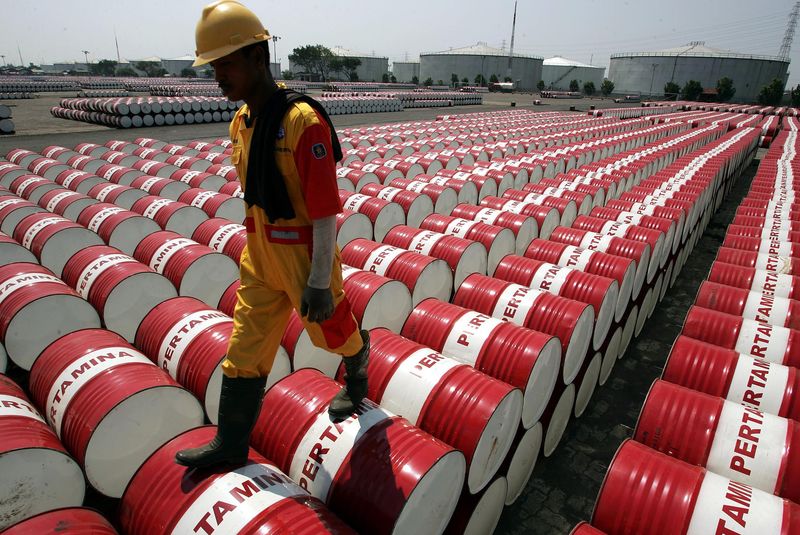Investing.com – West Texas Intermediate oil underwent extreme volatility in North American trade on Thursday, after data that showed that oil supplies in the U.S. registered a larger-than-expected inventory draw.
After initially extending losses slightly, crude then turned positive within the first couple minutes of trade, only to once again turn lower.
Crude oil for February delivery on the New York Mercantile Exchange slipped $0.08, or 0.15%, to trade at $59.56 a barrel by 11:08AM ET (16:08GMT) compared to $59.55 ahead of the report.
The U.S. Energy Information Administration said in its weekly report that crude oil inventories fell by 4.609 million barrels in the week ended December 22. Market analysts' had expected a crude-stock draw of 3.970 million barrels, while the American Petroleum Institute late Wednesday reported a supply draw of 6.0 million barrels.
Supplies at Cushing, Oklahoma, the key delivery point for Nymex crude, decreased by 1.584 million barrels last week, the EIA said. Total U.S. crude oil inventories stood at 431.9 million barrels as of last week, according to press release, which the EIA considered to be “in the middle of the average range for this time of year”.
The report also showed that gasoline inventories increased by 0.591 million barrels, compared to expectations for a build of 1.278 million barrels, while distillate stockpiles rose by 1.090 million barrels, compared to forecasts for a draw of 0.584 million.
The report came out one day later than usual due to the Christmas holiday.
Elsewhere, on the ICE Futures Exchange in London, Brent oil for March delivery fell $0.08, or 0.12%, to $65.91 by 11:12AM ET (16:12GMT), compared to $65.92 before the release.
Meanwhile, Brent's premium to the WTI crude contract stood at $6.34 a barrel by 11:13AM ET (16:13GMT), compared to a gap of $6.35 by close of trade on Wednesday.
Oil prices have rallied more than 10% this year thanks to the agreement between the Organization of Petroleum Exporting Countries (OPEC) and other non-OPEC producers led by Russia to curb output by about 1.8 million barrels per day until the end of 2018 in a bid to rebalance the global market.
However, as market participants turn their attention to 2018, there are concerns that increasing U.S. shale production may offset OPEC attempts to cut down on the global supply glut.
The balance of these two opposite forces may be why a Reuters’ monthly poll showed on Thursday that analysts expect Brent crude to stay close to $60 in 2018.
Elsewhere on Nymex, gasoline futures for February delivery edged down less than a cent to $1.7867 a gallon by 11:13AM ET (16:13GMT), while February heating oil rose 1 cent to $2.8404 a gallon.
Natural gas futures for February delivery gained 20.5 cents to $2.937 per million British thermal units.
